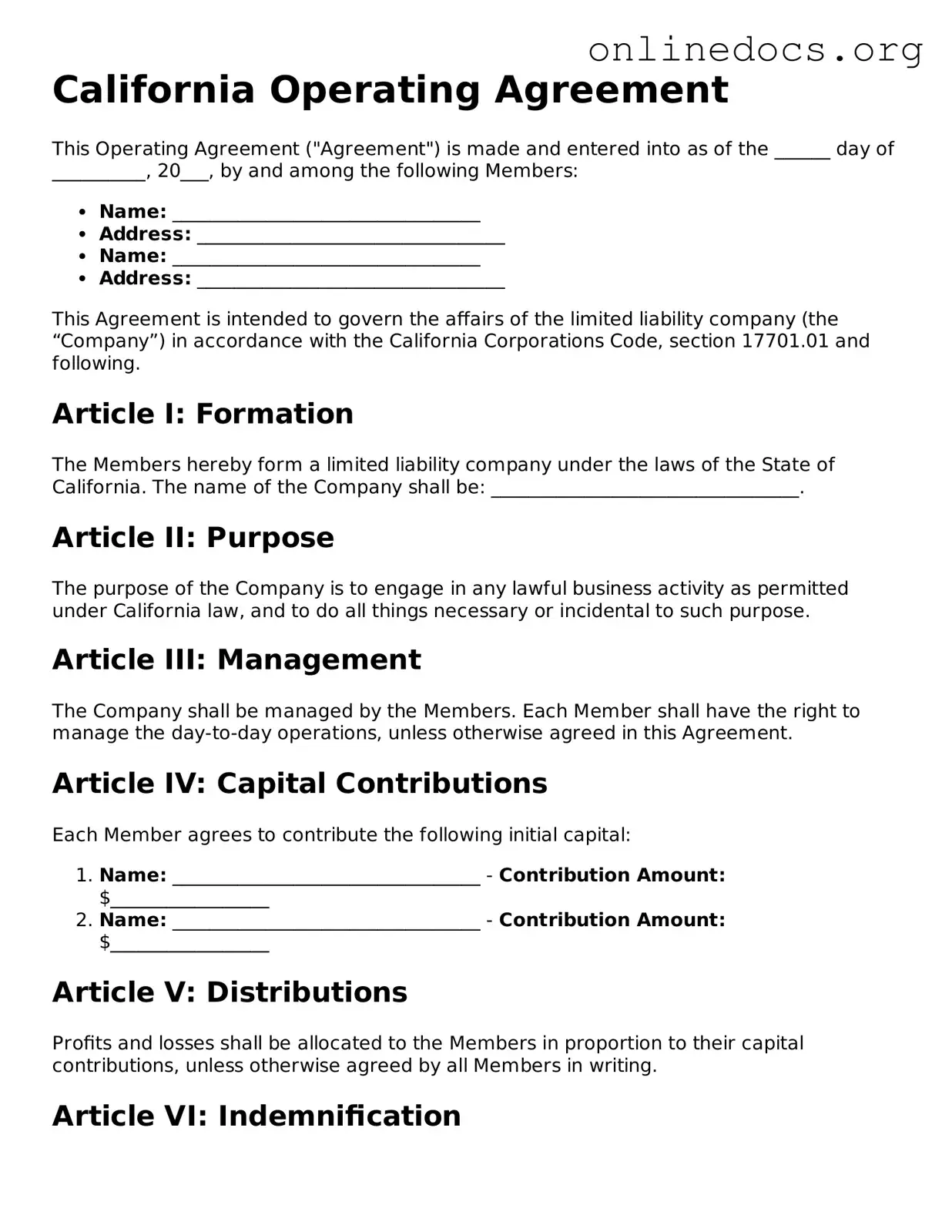The California Operating Agreement is similar to a Partnership Agreement. Both documents outline the structure and management of a business entity. They detail the roles and responsibilities of the partners involved. In a Partnership Agreement, the focus is on the relationship between partners, while the Operating Agreement emphasizes the management of an LLC. Both documents serve to clarify expectations and reduce conflicts among members or partners.
Another document that resembles the California Operating Agreement is the Bylaws of a Corporation. Bylaws govern the internal management of a corporation. They specify how decisions are made, the roles of officers, and how meetings are conducted. Like an Operating Agreement, Bylaws help ensure that all members understand their rights and obligations, fostering a smoother operation of the entity.
The Shareholders Agreement is also similar to the California Operating Agreement. This document is used in corporations and outlines the rights and responsibilities of shareholders. It can include provisions for voting, transferring shares, and handling disputes. Both agreements aim to protect the interests of the parties involved and provide a clear framework for decision-making.
If you are looking to buy or sell a vehicle, it is important to have a clear understanding of the legalities involved, which is where the californiapdfforms.com/vehicle-purchase-agreement-form comes into play, as it outlines the essential terms and conditions that protect both buyer and seller during the transaction.
A Joint Venture Agreement shares similarities with the California Operating Agreement as well. This document is used when two or more parties collaborate on a specific project. It outlines each party's contributions, responsibilities, and profit-sharing arrangements. Like an Operating Agreement, it helps clarify expectations and responsibilities, reducing the likelihood of misunderstandings.
The Limited Partnership Agreement is another document akin to the California Operating Agreement. It is used in limited partnerships to define the roles of general and limited partners. This agreement specifies how profits and losses are shared and outlines the management structure. Both documents serve to delineate responsibilities and protect the interests of all parties involved.
The Membership Agreement is similar to the California Operating Agreement, particularly for LLCs. It details the rights and obligations of members in an LLC. This agreement may cover aspects such as voting rights, profit distribution, and management responsibilities. Like the Operating Agreement, it aims to provide clarity and structure for the members involved.
The Franchise Agreement can also be compared to the California Operating Agreement. This document governs the relationship between a franchisor and franchisee. It outlines the rights and responsibilities of both parties, including fees, training, and operational guidelines. Both agreements establish clear expectations and help manage the relationship between the parties.
Lastly, the Non-Disclosure Agreement (NDA) has some similarities with the California Operating Agreement. While NDAs focus on confidentiality, they often accompany business agreements, including Operating Agreements. Both documents aim to protect sensitive information and establish trust between parties. They clarify what information can be shared and what must remain confidential, contributing to a smoother business relationship.
